
The plant known as Horse tail It is one of the most interesting, since it not only has a high ornamental value and easy cultivation, but also because of the evolution it has had since it appeared in the Devonian period (416 million years ago).
So if you want to know everything about her, don't miss this special because after reading it, it will be very easy for you to identify it and take care of it correctly.
Origin and characteristics
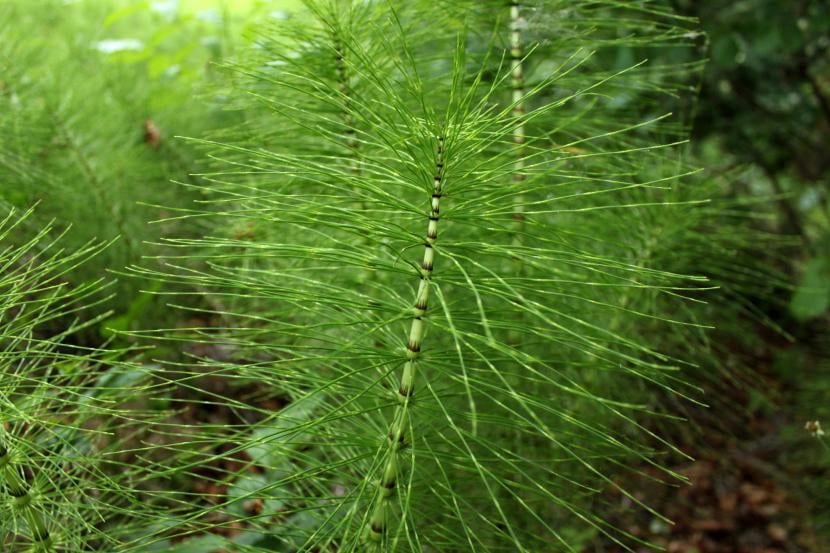
The horsetail plant lives near fresh water courses between 40º and 60º north latitude. It belongs to the botanical genus Equisetum and develops cylindrical and ringed stems 1 to 5cm in diameter. Very thin leaves sprout from them, giving them an appearance similar to that of conifers. It can reach a height of 8 meters, like the species Equisetum giganteum, but the normal thing is that it does not exceed the meter.
Main species
The genus is made up of 24 species, the main ones being the following:
Equisetum arvense
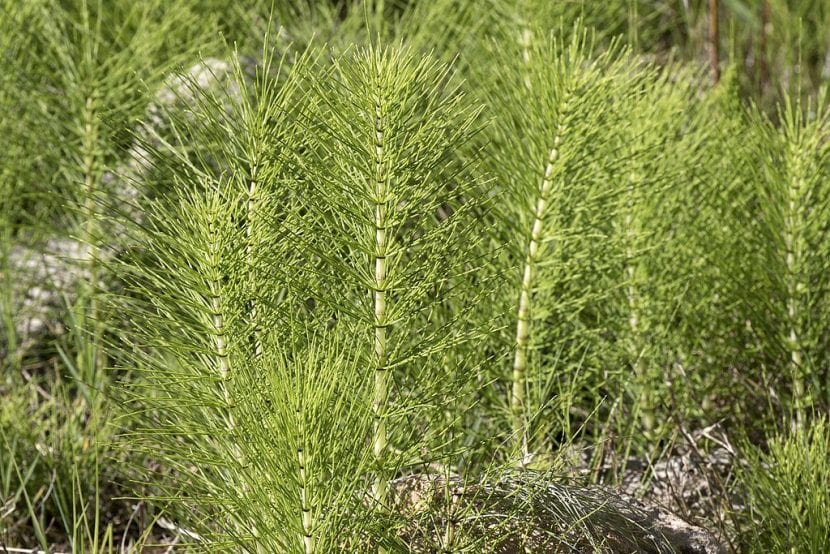
It is a plant found in Europe. In Spain it grows on the east coast and in Mallorca (Balearic Islands). It reaches a height of 50cm.
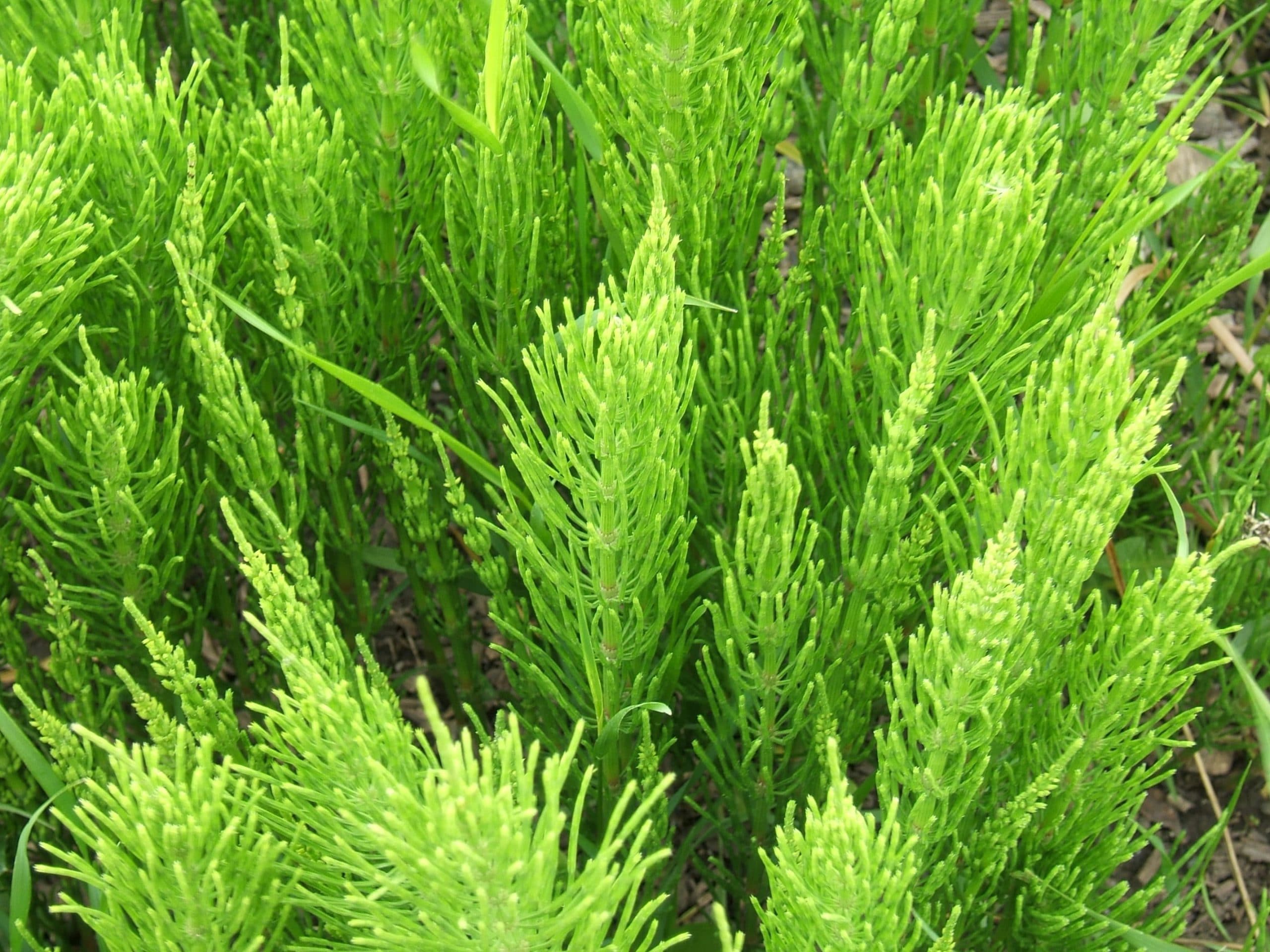
Equisetum hyemale
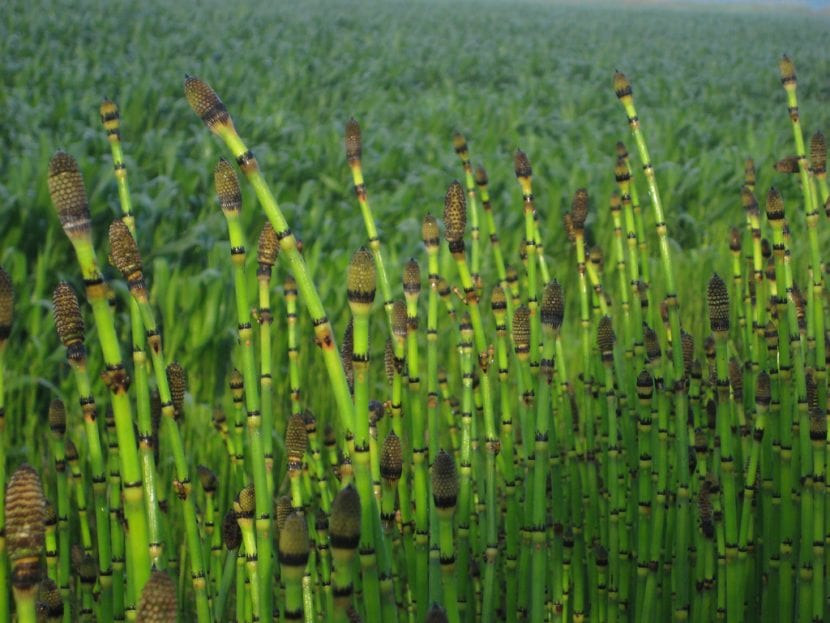
It is a plant known as winter horsetail found in North America, Central America, Europe, and Asia that reaches a height of up to 90cm.
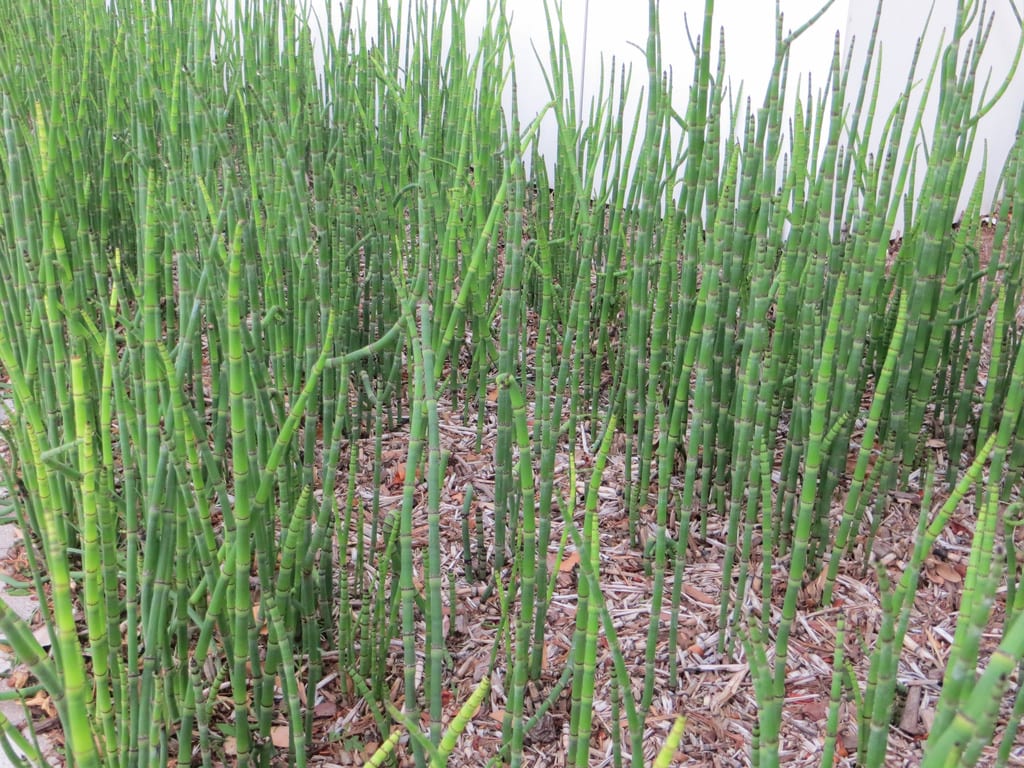
equisetum palustre
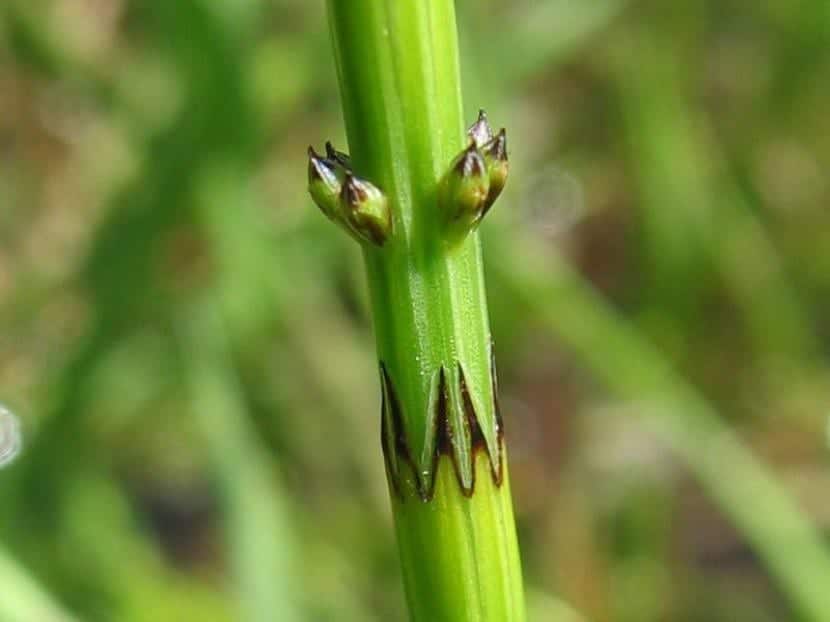
It is a plant found in the Eurosiberian region. In Spain we will find it in the northern half of the peninsula. It reaches a height of up to 60cm.
What are the cares?
If you want to get a copy, we recommend providing the following care:
Location
Equisetum or Horsetail must be placed in a bright location, either in full sun or in semi-shade (where it receives more light than shade). It does not have invasive roots, but I recommend planting it at a distance of at least one meter from pipes and so on so that it can develop well.
Earth
- Flower pot: universal culture substrate mixed with 30% perlite.
- Garden: it is indifferent, but it is important that it has good drainage.
Irrigation
Irrigation it has to be frequent, preventing the soil from drying out. In the case of having it in a pot, you can put a plate under it, or even plant it directly in a black rubber bucket without holes that farmers use.
Subscriber
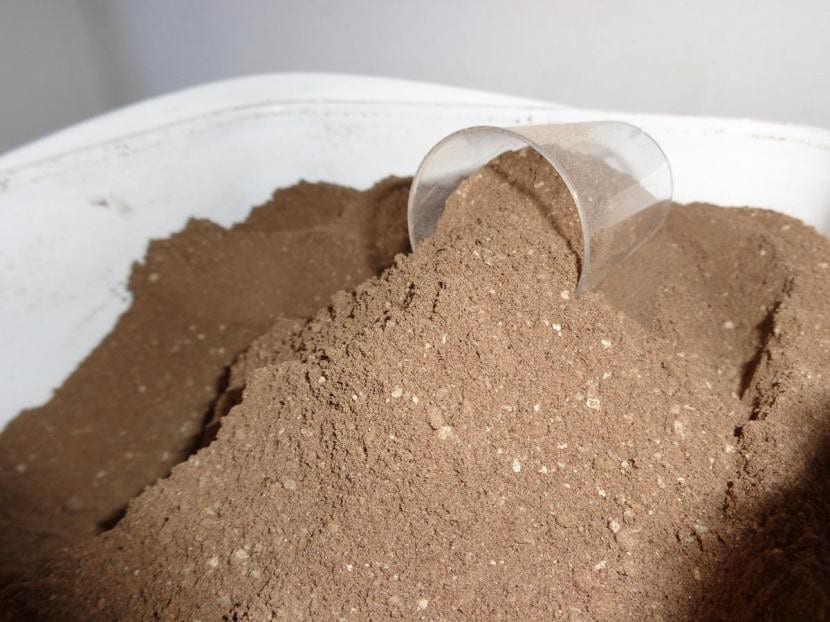
It is not necessary, but it is advisable. In spring and summer you can add a handful or two of organic compost (guano, manure) once a month.
Planting or transplanting time
Horsetail is planted in the ground in spring, when the risk of frost has passed. In case of having it in a pot, it must be transplanted every 2 years.
Multiplication
It multiplies by division, in spring.
Plagues and diseases
Does not have. One less reason to worry 🙂.
Rusticity
It resists cold and frost well up to -7ºC.
For what do you use it?
Ornamental
The ponytail does not have decorative flowers like rose bushes for example, but its stems are very elegant, so much so that they will bring that tropical touch that you like so much to have in the gardens.
In addition, can be grown in a pot throughout its lifeSo even if you don't have a garden, you can have this interesting plant at home.
Medicinal
This plant is used mainly as a medicinal. Both the stems and the leaves, in infusion or in tablets, have very interesting properties. In fact, they are used to eliminate fluids through the urinary tract, as adjuncts to other treatments in cases of edema, cystitis or kidney stones.
What's more, has anti-hemorrhagic and remineralizing properties, which means that it can be used both to stop bleeding - that of the nose for example - and to improve the health of the skin, hair and nails.
Where to buy?
Horsetail can be purchased at any nursery and garden store, be it physical or online. The price of an adult plant (or medium adult) is 4-9 euros, but you can also find it for 1-3 euros.
Curiosities
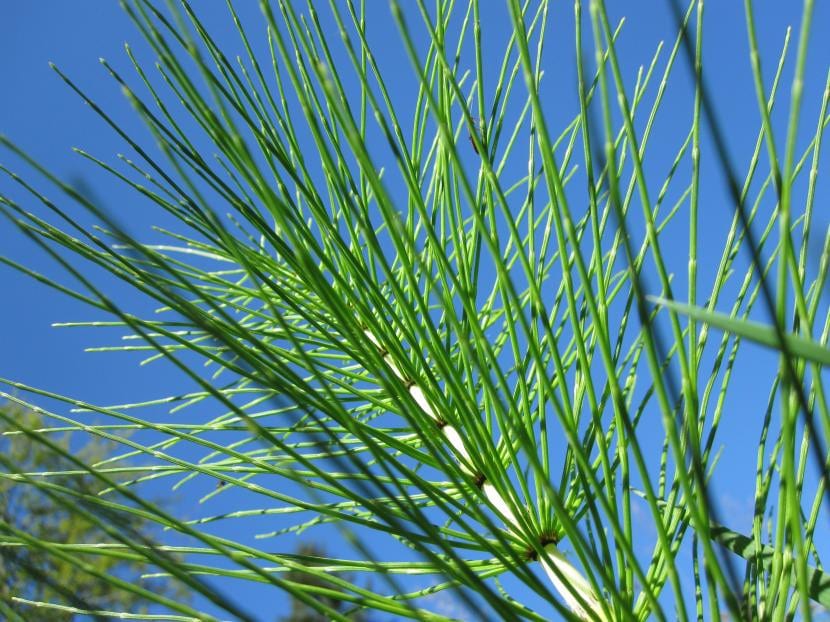
I didn't want to end this special without first telling you more about them, the Equisetum. As I mentioned at the beginning, they began their evolution 416 million years ago. At that time it was the trees, that is, the plants that ruled the forests. It's more, some species are known to have reached impressive heights of 20 meters, but they became extinct in the Carboniferous (about 359 million years ago).
Nevertheless, the fossils most clearly assignable to the lineage of the equistaceae do not belong to those times, but to a much more recent one: the Eocene (about 54-38 million years ago). Until today, only the "lower" species have managed to adapt, but all of them maintain the same characteristics as their ancestors.
What do you think about what you have learned about the ponytail? If you have any questions, leave them in the comments 🙂.
Is it also used as a biofertilizer? They recommended it to me as an infusion to strengthen fruit trees and other plants through irrigation.
Hello Adriana.
Yes, it can be used to pay too 🙂
Greetings.
hello a doubt can it be sown from seeds or just cuttings?
Thanks very interesting
Hello Maresa.
Horsetail is only multiplied by dividing the plant. It is the fastest and most effective method, since the seeds are very very small and the wind disperses them quickly.
Greetings.
Can I separate the bars to expand the perimeter they will be on? Plant one next to the other? And how is it done?
Hello Karen.
If you have it in a pot, you simply have to remove it and with a saw cut the earth bread in half (from top to bottom).
But if it is in the ground, you have to expose the roots, digging trenches about 30cm deep around the plant. Then, with a saw, divide the plant, and with the help of a hoe, for example, you can remove that part with roots and plant it elsewhere.
Greetings.
I find your article about horsetail very interesting, but I would have liked it to be more in-depth about its cultivation on a larger scale and its chemical composition. But it is still important, to know the benefits that this medicinal plant offers us. I consume it for the kidneys. Thank you.
Hi Margie or Hello Margarite.
Thank you very much for your words. The truth is that it is a very interesting plant.
Greetings.